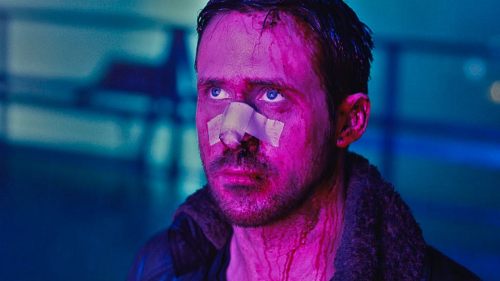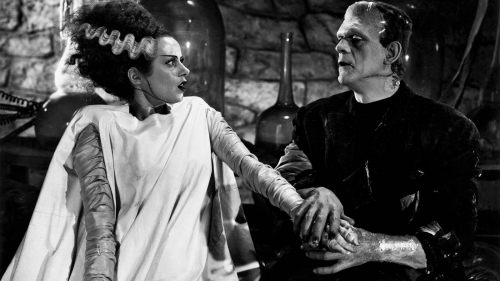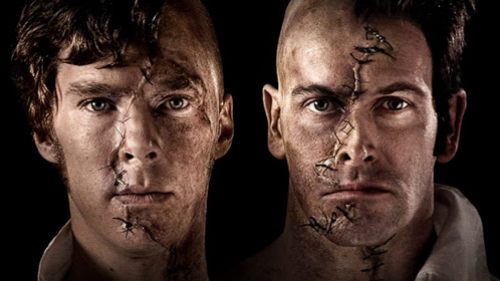Best Movies Ever: FRANKENSTEIN (1931)
You have to meet James Whale’s Frankenstein halfway. I won’t pretend that the film is just as easily enjoyable for modern audiences as it was during the original 1931 release, and I think claiming otherwise simply alienates newcomers. Frankenstein is very much a product of its time. It’s a movie set in Bavaria where only one actor bothers to adopt an accent, a movie whose only score is over the opening and closing credits and a film where you can see the wrinkles in the studio backdrop. It’s also a film whose staginess is only compounded by being actually based on a stage production.
Peggy Webling’s 1927 London stage production was a loose adaptation of the Mary Shelley novel, notable for being one of the first (if not the first) adaptation to call the monster Frankenstein after its creator. Frankenstein: An Adventure In the Macabre made some strange changes to Shelley’s text including, for reasons I don’t understand, swapping Victor Frankenstein’s first name with his best friend, Henry (a choice that made it to the film). It retained elements from previous adaptations, most notably 1823’s Presumption, Or The Fate of Frankenstein, which made the monster mute and introduced a lab assistant named Fritz. Webling’s play wasn’t particularly well received by critics but it was popular enough to make the leap over the Atlantic to open in New York. When the financiers lost all their money in the stock market before the show could open, they sold the rights to the play to Universal.
Bela Lugosi was famously supposed to play the monster, but he hated the then-current script and didn’t want to take a mute role. It’s the luckiest thing that could have happened to the picture, as it opened the door to Boris Karloff, who would create one of the most indelible - and human - monsters to ever menace the screen. It’s Karloff’s performance mixed with moments of absolute perfection from director James Whale that make the film incredible.
[caption id=“attachment_15610” align=“aligncenter” width=“525” caption=“This announced Bela Lugosi in FRANKENSTEIN. Somehow I suspect his version wasn't going to have eye lasers and be fifty feet tall, but who knows.”]
[/caption]
Some of what might have been the best scares for 1931 audiences seem hokey today; a scene where the monster walks around behind Henry Frankenstein’s wife-to-be as she paces her room is essentially comic now, playing out like a Marx Brothers routine. But other scenes retain every bit of impact, even 80 years on, and are a testament to the eternal power of the cinematic experience.
The first of these perfect scenes is the reveal of the monster. Frankenstein’s creation had been a presence through previous scenes - laying dormant on a slab, winched into the stormy Bavarian night and then seen slightly twitching before actor Colin Clive delivers his immortal ‘It’s alive… alive!’ speech - but the creature makes its true appearance in a darkened lab, walking backwards through the door so that Karloff can slowly turn and reveal the ghastly effect of Jack Pierce’s classic and timeless make-up. Part of that effect, by the way, came from Karloff opting to remove his dentures so as to give the monster’s face a more hollow look.
The shot is perfect and still to this day unsettling. The monster is only days old, slowly coming to understand its new, stitched together limbs. Karloff moves with the rigid immobility of rigor mortis, and he has an inhuman gait that has been copied and parodied but never equaled. Forget about being uncomfortable in his own skin - Karloff sells us on the monster being uncomfortable because he’s in skin that isn’t even his own.
Chilling is the right way to describe it, but Whale isn’t interested in simply scaring us (and back in 1931 the monster’s visage was truly horrifying to audiences). When the creature finally experiences daylight via an opening in the lab’s roof (cleansing sunlight coming through the same hole that birthed the creature - a great vagina overhead that once gives him life and then offers something he wants so very badly), Karloff lifts his hands stiffly, painfully… but joyfully. He reaches for the sun, and the inhuman undead thing is now so human, so vulnerable, so real. Shelley’s monster taught himself to speak, but this monster doesn’t need words when Karloff makes us understand the way the sunlight feels on his palms, like he’s holding the sun itself in his hands.
Which makes the next moment more ironic as Fritz, Frankenstein’s hunchbacked assistant (played by the incredible Dwight Frye, who had pioneered the weaselly little shit assistant character as Renfield in Dracula earlier that year), rushes into the room with a lit torch and freaks the monster out.
The next perfect scene comes later, after the monster has had his revenge on Fritz and escaped into the countryside. Henry Frankenstein, his fever of insanity seemingly broken when he thinks the creature has been killed, is about to get married and the entire town is preparing to celebrate. The monster plays by the side of a lake with a little girl and, misunderstanding the game, throws her in and drowns her.
But that scene (which is incredibly famous, and was censored in many American cities upon release) isn’t what I’m talking about. It’s what comes next. As the town celebrates - drinking, dancing, kissing, smiling - the girl’s father walks into town, as lifeless as the creature before the storm, holding the limp, muddy body of his daughter. As he passes the revelers they stop and join in a grim, silent parade behind him.
Much of Frankenstein was shot on enormous, gorgeous sets, and many of the shots are static - a technical limitation of the time due to the huge, noisy cameras. But this scene was shot ‘on location’ on the Universal backlot, in the Court of Miracles set. The difference between the moodily lit stages and this shot is stark, but mostly because of how bright the Southern California sunshine makes it. The business of Henry Frankenstein and his monster has been conducted on Expressionist-inspired sets but this tragedy occurs in a recognizable real world. What’s more the camera, freed from having to shoot sound, is able to dolly alongside the grieving father, creating an incredible long take as the girl’s corpse travels through the town, destroying the moment of merriment.
A filmmaker shooting this scene would probably do it exactly the same way in 2011. The power of the moment is intense, especially when played against the broad silliness of the lead in to Frankenstein’s wedding*, and the sight of the little girl’s legs swinging is actually more grisly than any explicit bit of gore could have been.
The dead girl, of course, leads to the formation of a mob. Whale plays us with here; Frankenstein himself is one of the leaders of the mob, and at first their cause is obviously righteous. As much as we understand what happened at the side of the lake, the monster did just drown an innocent little girl. Leaving her in the water and just having the sobbing father show up wouldn’t have been enough; showing us her corpse puts us out into the crowd… which is where Whale sets up his camera as the Burgomaster whips them up into a torch-lighting frenzy.
The third perfect scene comes here, at the end. After a long chase through the exact same set of rocks (photographed from different angles), the monster and his maker meet. The monster takes Frankenstein to a windmill, although what his actual purpose is remains unknown because the howling mob shows up right afterwards. They circle the building with their torches and the monster, terrified and upset, throws his maker off a high balcony.
Originally Frankenstein was to have been killed, but early audiences objected, so Whale instead has him slam into one of the blades of the windmill before hitting the ground. I guess the idea is that this is supposed to break his fall, but it actually makes the whole thing so much more brutal.
At this point the mob, now faceless and shot from a distance and a scary monster all its own, puts the windmill to the torch. The monster well and truly flips out. And it’s here that Whale twists the knife in the audience; instead of watching the windmill burn and collapse from afar he brings us inside, watching as the panicked monster fumbles around in flames before being pinned by a collapsing roof beam. That might have been enough - the monster is trapped, the windmill burns, we know his fate - but Whale comes back in again, and Karloff wails and thrashes in agony and terror. It’s heart breaking to watch, and if it went on for even a moment longer it would be too much.
Karloff doesn’t play the monster like a child but rather like a teenager. He isn’t aware of the way he can hurt others, he doesn’t understand how to interact with people and he can’t control his anger or fear… or lust. The scene where the monster menaces Frankenstein’s fiancee in her room ends with her fainted on her bed, a symbol of her swooning in terror before his uncontrolled sexuality (and as we learned in Young Frankenstein every part of this guy is big). He has lust that he doesn’t understand and, like his other emotions, can’t harness. If this monster could speak he would say what every teenager has ever said: “I didn’t ask to be born!”
That difference between child and teen is what makes the monster work for me. He understands he’s done wrong when he throws the girl in the lake, and he immediately regrets tossing Frankenstein off the balcony. We can also assume he feels really bad for upsetting the fiancee, as he’s already skedaddled out of the room when Frankenstein and friends show up, alerted by her screams.
The film posits a nature vs nurture debate, although the script muddies the waters by having dipshit Fritz bring his master an abnormal criminal brain (the scene where the abnormal brain is introduced informs us that you can tell someone is a criminal simply by opening up their skull and seeing how many ridges they have, a much wetter form of phrenology). While the presence of a criminal brain in the monster’s skull should undercut our sympathy for him - we know all along he’ll go bad - Karloff is able to bring a conflicted aspect to the character that overcomes this thudding plot point. Unfortunately the movie has the monster being doomed when it comes to either nature or nurture - either his criminal brain would turn him or Fritz’s torture would - but Karloff imbues those heavily lidded eyes with a torn soul. Many people talk about the monster as if he doesn’t know he’s doing wrong; I think the real tragedy of the monster is that he’s totally aware he’s doing wrong, he just can’t help himself.
The film is saddled with a ‘happy’ ending, where Henry lives and is cared for by his fiancee. But Whale undercuts that happiness by having Baron Frankenstein make a toast to the rescheduled wedding bringing a son of Frankenstein. We already know that Henry Frankenstein has had his son, and the results of it have been devastating.
When you meet the film halfway, when you acknowledge that 1931 pacing isn’t the same as that of 21st century cinema, when you understand that the film was shot long before the naturalistic Method form of acting became the norm, when you understand that stark realism wasn’t the main concern of filmmakers, Frankenstein is incredibly effective. No matter how dated aspects of the film are (and of course they’re dated, the movie is 80 years old), the heart of the film remains just as fresh as it was on first release. And that heart, possibly coming from the chest of a murderer hanging on the gallows, still retains menace and scares and existential horrors enough for even the most jaded modern audience.
* I write this having just seen Frankenstein on the big screen for the first time ever, and watching it for the first time at all in a number of years - maybe since the 1990s. One of the big takeaways for me this time was just how utterly silly Frankenstein’s father, Baron Frankenstein is. It’s comic relief that probably irritated me when I was younger, but on this viewing sort of tickled me. It doesn’t quite work (the film’s tone is all over the place in general, largely attributable to a parade of screenwriters and polishers) but old Frederick Kerr in his fez and big long pipe and disdain for the help is simply adorable.



